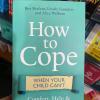Dear Teachers,
You’ve spent your career helping students find clarity in chaos—teaching them how to organize thoughts, structure arguments, and write with purpose. You’ve guided us through the intimidating world of thesis statements, transitions, and evidence. For that, I’m grateful. The five-paragraph essay has been a reliable tool in that work—simple, teachable, and consistent.
But I’m writing to ask for something more.
At some point, the five-paragraph structure stops being a helpful starting point and starts becoming a box. Instead of asking ourselves, What do I want to say?, we start asking, How do I fit this into the mold? We break complex ideas into three parts even when they don’t naturally divide that way. We stretch weak points just to fill a paragraph, or worse, abandon better ones because they don’t “fit.” That’s not clarity—it’s compromise.
I’ve done this myself. I’ve reshaped arguments I cared about to match the format. I’ve written essays that were technically correct but intellectually hollow—not because I didn’t care, but because I’d learned to value form over substance. And I’ve seen my peers do the same. We weren’t avoiding depth; we were trained to avoid breaking the rules.
Outside of school, writing doesn’t work like this. A strong research paper may follow a different flow than a reflective essay or a cover letter. A compelling article might lean into narrative or flip the expected order of points. Real writing asks you to think about audience, purpose, and context—and to make structural choices based on all three. But when students are taught the five-paragraph format as the default, we bring it with us even when it no longer fits. Not because it’s the best choice—but because it’s the only one we know.
This isn’t just about creativity. It’s about thinking. Educators like Duane Nichols and Kimberly Campbell, who study writing instruction, warn that rigid formats can produce “mechanical writing”—essays that check all the boxes but don’t say anything real. English professor Kimberly Wesley adds that the classic three-point thesis often oversimplifies complex arguments. I’ve experienced that too. Some of my best ideas didn’t fit neatly into three body paragraphs. So I left them behind.
I’m not saying we should throw out the five-paragraph essay entirely. For beginners, it can be a helpful tool—a way to build confidence and learn structure. But it should be taught as just that: a tool, not a template for all writing. It’s the training wheels—not the bike.
When I wrote an earlier version of this piece for class, my professor asked an important question:
“What if this message reaches a student too early—before they’re ready to leave the structure behind?”
That stuck with me. It reminded me that writing isn’t just about expression—it’s about timing, context, and readiness. The same goes for teaching it.
So here’s what I’m asking: Keep teaching structure. But teach choice, too. Let students write in different genres. Let them experiment. Let them figure out which shape fits their message—not just which message fits the shape.
Writing isn’t a formula to memorize. It’s a way of thinking, building, and connecting. So yes—teach the five-paragraph essay. But teach students how to outgrow it, too.
Sincerely,
A student who’s still learning to write
Mika Trepanier
Works Cited
Campbell, Kimberly Hill. “Beyond the Five-Paragraph Essay.” Educational Leadership, vol. 71, no. 7, Apr. 2014, pp. 60–65.
Connor, Ulla, and Estela Ene. The Origins and Development of the Five-Paragraph Essay. Indiana University–Purdue University Indianapolis (IUPUI), Center for Intercultural Communication.
Nichols, Duane C. “The Five-Paragraph Essay: An Attempt to Articulate.” English Journal, vol. 87, no. 1, Sept. 1998, pp. 50–53.
Wesley, Kimberly. “The Ill Effects of the Five Paragraph Theme.” English Journal, vol. 90, no. 1, Sept. 2000, pp. 57–60.
















